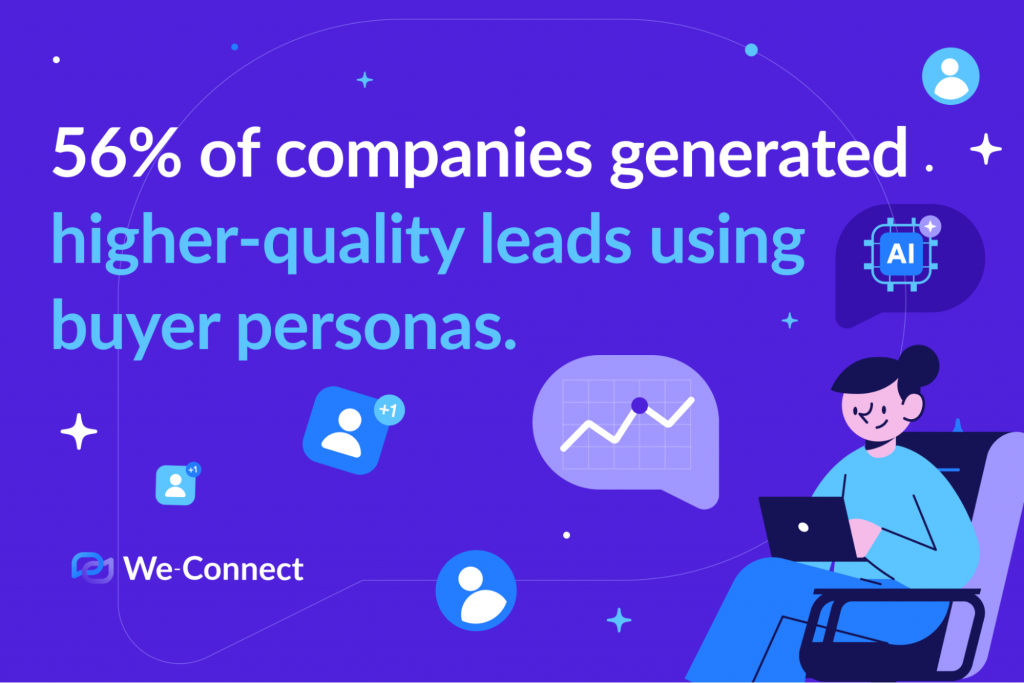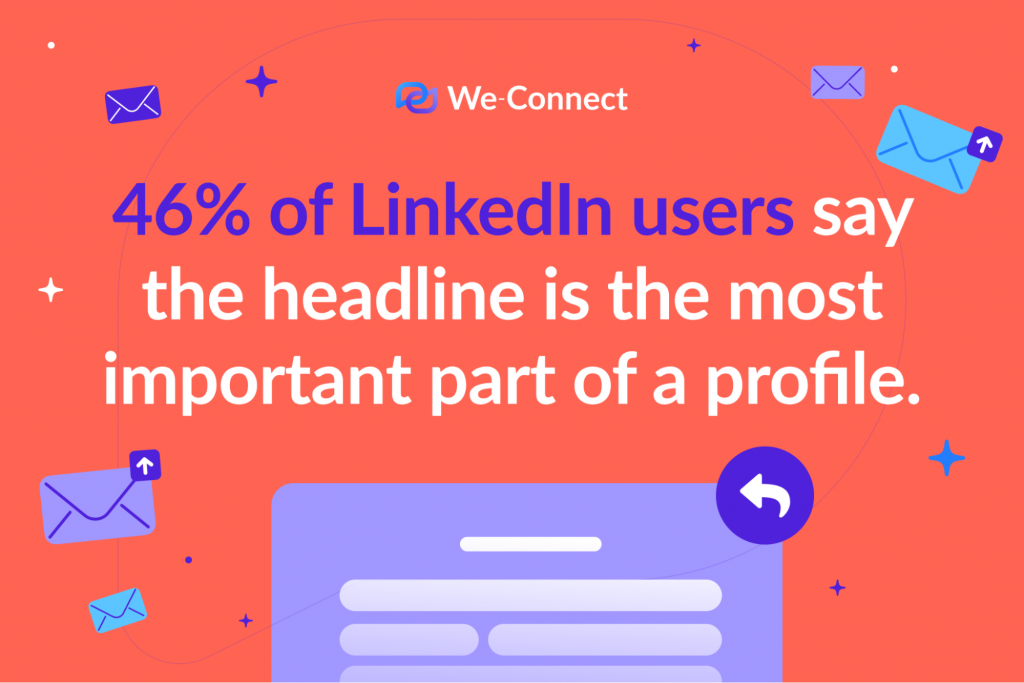- December 19, 2023
- Digital Marketing
How To Build an Effective Outreach Strategy on LinkedIn

If you’re not getting responses to your cold calls or emails, you should try LinkedIn outreach. Often users are more active (and more willing) to respond to a connection request than they are to respond to a promotion email. Additionally, LinkedIn offers the added benefits of forming relationships and potential collaborations with anyone with whom you connect.
In this article, we’ll cover everything you need to know to build a successful outreach strategy on LinkedIn.
What is Cold Messaging on LinkedIn?
Cold messaging on LinkedIn is just like a cold call or cold email. The only difference is the communication takes place on LinkedIn. For non-premium LinkedIn users, you can send connection requests; for premium users, you can send connection requests and InMails.

Connection requests are the most common way of cold messaging prospects on LinkedIn. When sending a connection request, add a personalized note to each individual with your offer/initial message. Manage your LinkedIn inbox by tracking requests, follow-ups, and responses for effective communication.
Here, you can use the help of rewording tools to make your message more enticing to the person on the other side.
InMails are messages that your leads can see without accepting your connection request. While this feature is only available to premium users, you can also send InMails if you employ lead automation to help scale your LinkedIn outreach.
Why Send Cold Messages on LinkedIn?
With over 900 million users, LinkedIn has many opportunities for social selling, networking, and career development. Additionally, according to a study from Hubspot, sales professionals with a strong social selling index on LinkedIn have 45% more sales opportunities than those who don’t, as well as a higher customer satisfaction score.
Here are a few more reasons you should be leveraging LinkedIn for outreach:
Grow Your Network
Even if you’re not closing big sales, being an active user on LinkedIn can boost your network. This can bring a lot of good things to your career, such as better job opportunities, benefits of employee referral, and the power of social selling.
The bottom line is that growing your network is an essential part of being a successful professional.
Find Qualified Leads
It’s probably no secret that prospecting on LinkedIn will bring in some leads. In fact, Hubspot found that 55% of sellers said that LinkedIn was the best channel to source leads. Of course, that depends on what your audience looks like – but if you’re selling to the professional crowd, LinkedIn is the way to go.

Part of the reason LinkedIn is a powerhouse for lead generation is thanks to the many ways you can prospect. From cold messaging to social selling, there are multiple successful approaches to securing pipelines on LinkedIn.
Utilizing a LinkedIn data scraper can significantly streamline the process of extracting valuable contact information, including emails, from potential leads on LinkedIn. This tool automates the extraction of data from profiles that match your target audience criteria, saving you considerable time and effort. To effectively use a LinkedIn data scraper for obtaining emails, ensure you’re adhering to LinkedIn’s terms of use and privacy policies, and choose a scraper that allows for precise targeting by filtering profiles based on industry, job title, location, and other relevant parameters. This way, you can quickly gather a list of emails from LinkedIn profiles of professionals who are most likely to be interested in your products or services, making your lead generation efforts more efficient and focused.
Showcase Your Knowledge
One of the popular ways to find leads on LinkedIn is through content. That’s the reason you see so many LinkedIn influencers posting their “favorite tip to write emails that convert.” Sure, there’s a lot of noise on LinkedIn, but there are also a lot of ears.
Sharing content on LinkedIn is as simple as doing it. Most companies see the highest engagement by posting high-value content at least twice a week.
Benefits of Job Searching
If you’re ready to take your job search to the next level, LinkedIn is a powerful way to do so. Just like you’d run an outreach campaign for prospecting, you can use an outreach campaign to connect with hiring managers and recruiters.
Compared to candidates that only submit a resume, contacting the hiring manager directly to ask a question or share your excitement looks to an employer. Just be sure to be authentic in your messaging so you hear back about your application!
Possible Collaborations and Partnerships
Cold messaging allows you to build relationships with your potential customers. Sometimes, these relationships can turn into collaborations or partnerships, even if you don’t close the sale.
That’s why you see so much talk about the importance of nurture campaigns alongside your outreach. For the best engagement, I recommend a monthly touch-point for leads. Some of these can include sharing personalized content, congratulating the lead on an achievement, or sharing a valuable offer.
Start Here Before Messaging!
Creating the perfect message to engage your audience is only half the battle. Actually, it might be even less than half. Here are some of the other things you need to accomplish if you want to see results from LinkedIn cold messaging:
Develop a Buyer Persona
Before you jump into any type of lead generation techniques or strategies, you should start by nailing down your target audience.
If you don’t have a buyer persona yet, look at some of your current customers and ask yourself these questions:
● What do my customers have in common?
● What problem does my product or service solve?
● Who typically “owns” the problem that you’re solving?
● Are there any outliers in your audience? What are they?
Answering these questions can get you to a great starting place to build out your buyer persona. Of course, you can have multiple personas (or types of customers). If that’s the case, plan your messaging and outreach accordingly.
Prospecting on LinkedIn gives you the ability to narrow down your buyer persona to the truly nitty gritty. To build a personal experience for your customer, use LinkedIn (or another customer analytics tool) to specify the similar interests your audience has, the groups your audience is a part of, and the technographic factors that your audience has in common.
Optimize Your Profile
To get the most out of your LinkedIn account, you’ll want to optimize your profile. Here’s what I recommend double-checking:
● Headline: The headline is the second thing (after your name) that shows up when you send a message on LinkedIn. You want to keep it concise and summarize what you do in a valuable way. Ex., Building partnerships at We-Connect
● Profile Pic: Your profile picture says a lot about you. A professional headshot visually establishes credibility and, if you have a nice smile, may even win you some deals.
● Summary: Your LinkedIn summary is where you can get into more detail about what you do. SEO optimize this by including keywords related to your niche, and drop a call to action (CTA) in there for passive conversion.
● Recommendations: LinkedIn recommendations are a great way to get some social credibility that you’re a trustworthy and easy-to-work-with seller. Ask your colleagues or previous customers to exchange positive recommendations.
Understand Audience Behavior
When you start writing your outreach messaging, you want to have a deep understanding of your ideal customer profile (ICP). Specifically, you should understand exactly what problems your product/service solves and what typical symptoms of these problems are. That way, you can empathize and better relate to your customers.
If you’re prospecting in an industry you’re not familiar with, it’s a good idea to learn some common slang in that industry. That way, you can correctly use abbreviations in your messaging (without sounding like a robot).
Identify Mutual Connections
Referrals are a fantastic way to secure new deals. Even if you don’t have many referrals, 2nd degree connections (people whom you share a mutual connection with) are more likely to respond to your outreach than those without a mutual connection. This process is commonly known as referral marketing.
In your connection request to 2nd-degree connections, we recommend sharing how you know your mutual connection before you start pitching. Instead of cold outreach, this is more in line with warm outreach.
Create Authentic Templates
Templating is still one of the best ways to do cold outreach at scale. I don’t mean adding [first name] and calling it “good enough.” I mean creating individual templates based on specific segments of your audience.
A great way to break your audience into segments is based on job function. For example, individual contributors are going to use a tool differently than a manager. Using an automation tool allows you to add dynamic variables to a message (such as the contact name, job title, company name, and date).
I recommend creating templates based on specific challenges and demographics of your audience. The more personalized, the better.
Conclusion
If you’re not using LinkedIn to source leads, you need to start. With a low barrier to entry, all you need to start is an understanding of the platform and an automation tool that fits your needs. Yes, you can do outreach manually, but doing this at scale will not be a viable option long term.
Share it with your friends!
Explore
More
Ready to get started?
Harness the unmatched capabilities of ActionSprout to transform your Facebook strategy. Elevate engagement, captivate your audience, and achieve unparalleled results. Don’t wait – seize the opportunity.

